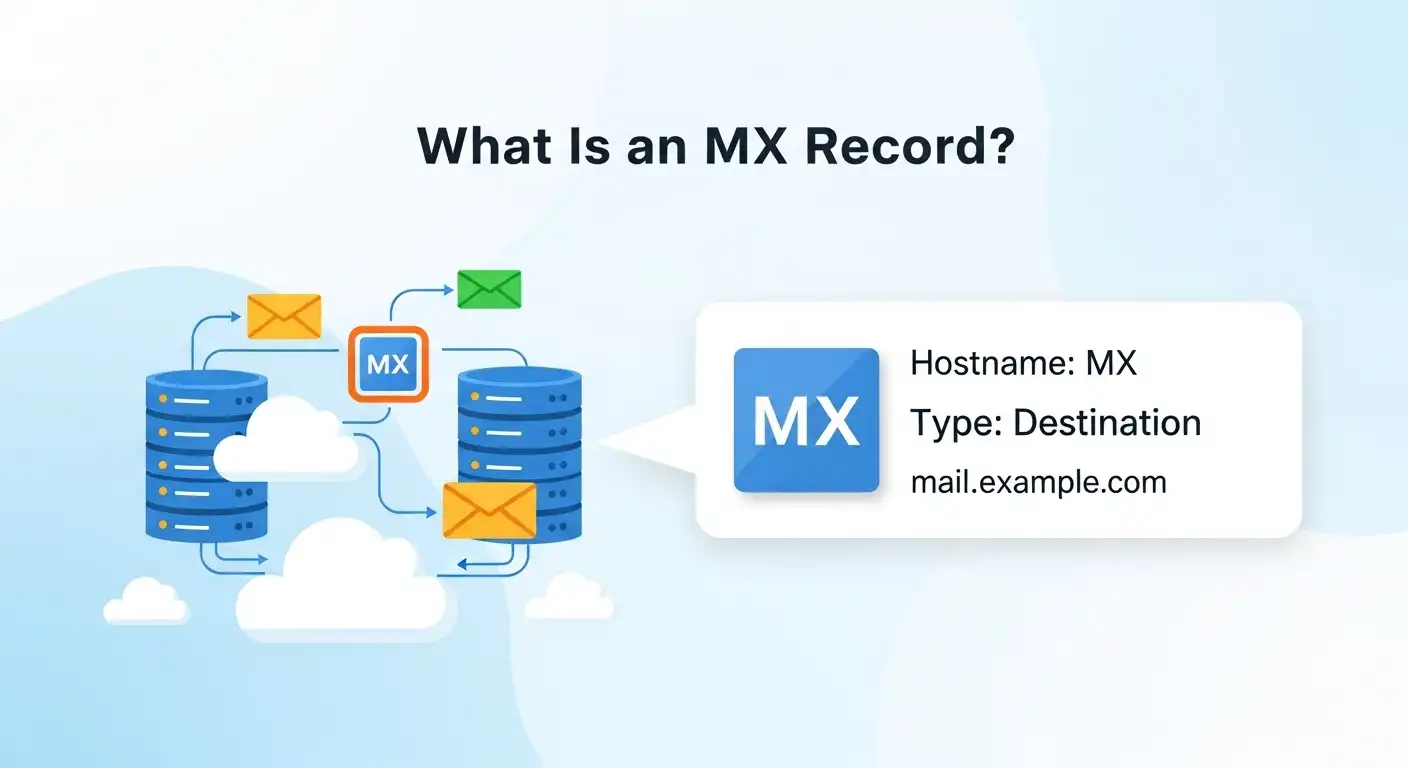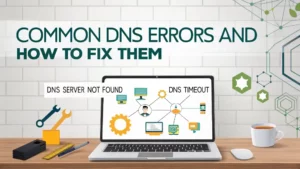Table of Contents
What Is an MX Record?
If you’re setting up email for your domain, understanding what is an MX record is absolutely essential. MX records (Mail Exchange records) tell the world which server should handle your email. Without them, your emails wouldn’t arrive where they’re supposed to.
What Is an MX Record in DNS?
In simple terms, an MX record is a type of DNS record (Domain Name System record) that identifies the mail servers responsible for receiving email messages on behalf of your domain. It’s the key link between the internet and your organization’s email system.
MX stands for Mail Exchange. These records direct email traffic to the proper destination – making them vital for any business or individual using custom domain email addresses like for example: [email protected].
How Do MX Records Work?
When someone sends an email to your domain, here’s what happens:
- The sender’s mail server looks up your domain’s DNS.
- It finds the MX record, which tells it where to deliver the email.
- The email gets routed to the specified mail server.
Each MX record has a priority value. If a mail server with the lowest priority is unavailable, the next available server will be tried.
What Is MX Record Priority?
Each MX record is assigned a number indicating its mx priority. Lower numbers have higher priority. For example:
| Host | Points To | Priority |
|---|---|---|
| mail.domain.com | smtp.server.com | 10 |
| backup.domain.com | smtp2.server.com | 20 |
If mail.server.com (10) becomes unreachable, backup.domain.com (20) takes over—ensuring email continuity.
What Is the MX Record for a Domain?
Your domain’s MX record is the DNS configuration that tells where to send incoming email. It’s typically set up through your DNS host’s control panel or your domain registrar.
To find out your domain’s MX records, you can use online tools like MXToolbox or run a DNS query using terminal or command prompt:
nslookup -type=mx yourdomain.com
What Type of DNS Record Is Used for Email Servers?
The primary DNS record used for routing email is the MX record. However, other DNS records can support email functionality including:
- A Record: Points to an IP address (used if MX record points to a hostname).
- TXT Records: Used for SPF, DKIM, and DMARC to prevent spoofing and spam.
What Is the MX Record for Gmail?
If you’re setting up Google Workspace for your domain, you’ll need to configure multiple Gmail MX records with different priorities. Here’s an example mx record setup for Gmail:
| Mail Server | Priority |
|---|---|
| ASPMX.L.GOOGLE.COM. | 1 |
| ALT1.ASPMX.L.GOOGLE.COM. | 5 |
| ALT2.ASPMX.L.GOOGLE.COM. | 5 |
| ALT3.ASPMX.L.GOOGLE.COM. | 10 |
Are MX Records Necessary?
Yes. Without MX records, email servers don’t know where to deliver messages. If your domain has no configured MX record, emails will bounce back or silently fail. They are a must for reliable communication.
MX Record Format Explained
The correct mx record format typically looks like this:
@ IN MX 10 mail.yourdomain.com.
Where:
- @ is shorthand for the root domain
- IN signifies the Internet class
- MX is the record type
- 10 is the priority
- mail.yourdomain.com. is the mail server host
How Do I Know My MX Record?
Use these methods to check your domain’s dns email records:
- Access your registrar’s DNS settings panel
- Use tools like MXToolbox
- Run command-line tools like
digornslookup
Final Thoughts
Understanding what is an MX record is vital for success with email communication. From ensuring reliable delivery to setting priority failovers, proper configuration makes a huge difference. Whether you’re using Gmail, Outlook, or a custom mail server, double check your DNS mail records, test routing, and keep your setups secure.
FAQs About MX Records
- What are MX records and why are they important?
MX records are DNS entries that tell email senders where to route messages for your domain. Without them, your domain can’t receive emails.
- What is an example of an MX record?
Example: @ IN MX 10 mail.yourdomain.com. — This tells inbound messages to route to ‘mail.yourdomain.com’ with priority 10.
- Can I have multiple MX records?
Yes. Having multiple MX records increases email reliability by providing fallback servers if one fails.
- Do I need an MX record with a third-party email provider?
Yes. Even with providers like Google Workspace or Microsoft 365, you must correctly set MX records to point to their servers.
- What happens if an MX record is incorrect?
Emails may bounce, never get delivered, or go to the wrong server, causing significant communication errors.




